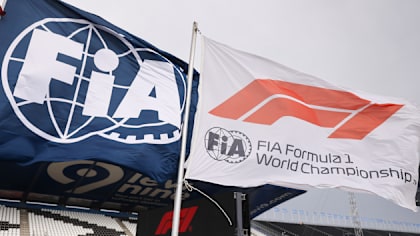Technical
Testing explained: Rob Smedley on aero rakes
Share
You see all sorts of weird and wonderful aerodynamic rakes these days – and they’re getting bigger and bigger as the years go on.
An aerodynamic rake is a series of ‘pitot tubes’, which are sensors designed to measure off-body flow structures – and they’re actually quite an old technology! By measuring the dynamic pressure, they can then paint a picture of the flow structures that are coming off things like the front wing, the front wheels – which is all-important – where the vortices are that are coming off the front wing, which will obviously be very different in 2019 as we move to a different design and a different regulation.
SMEDLEY: What is correlation and why’s it so important?
Then further downstream, you’re interested in what’s happening coming off the turning vanes, you’re interested in what’s happening on the top body behind the diffuser. So you can paint all of these pictures of the different flow structures and the different vortex structures coming off various parts of the car. That information then goes back to the aerodynamics team, and they can then use that data in order to then optimise and improve the upstream flow structure generation.

Nowadays, the processing of the data that comes back from the aero rakes is very quick – it’s almost real-time. Teams have developed software that takes the raw data and spits out these really interesting images and video files.
Some of the stuff, you can act on immediately. So if you’re doing a ‘front wing polar’, for example, which means stepping through from a low angle up to the maximum angle of the front wing, then we’re able to see if that front polar is healthy. Or we can see if there’s a point where the front wing ‘falls over’, as we term it, where we’re not generating the downforce on the front anymore. You might be getting a stall or a semi-stall, and at that point, the information from the aero rakes is telling the race engineers to stay away from that area of running the car.
Equally, there are sometimes more fundamental things that we pick up from the aero rakes that we can’t solve at the track, and that then goes back to the aerodynamics team and they can deliberate on how to solve these fundamental problems and to put these flow structures in a more optimised position.
YOU MIGHT ALSO LIKE
News ‘Our worst performance so far’ – Wolff left searching for answers after Mercedes’ low-key display in Saudi Arabian GP
News GM Performance Power Units approved as F1 power unit supplier
News Tsunoda labels collision with Gasly ‘a great shame’ after Red Bull racer misses out on vital learning in Saudi Arabian GP
Podcast BEYOND THE GRID: McLaren chief Piers Thynne on the team’s championship transformation and life at Woking




